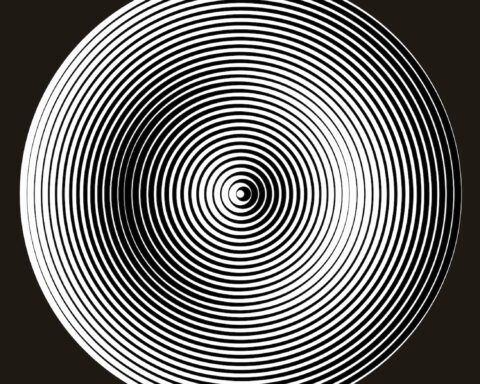The Argentinian Leandro Erlich, Galleria Continua’s artist, internationally known, began his artistic career at a very young age; he began exhibiting at 18, receiving the first of many other awards at the age of 19 from the Fondo Nacional de las Artes of Buenos Aires. He has won numerous scholarships. In 2001, at the age of 28, the artist represented Argentina at the Venice Biennale, with perhaps the most famous of all his works, The Swimming Pool, 1999 (Installation, 270 x 240 x 540 cm), and in 2005 with La Vista, (1997 – 2005 Video installation). These works have mesmerized the public and art dealers.

Marika Marchese: How and when did the passion for illusion arise?
Leandro Erlich: Illusions are a good way to question the understanding of what we consider real. In fact, I wouldn’t say that I have a passion for illusion but rather a passion for understanding the basis of reality (individual and collective).
M.M.: With The Classroom, we observe each other from afar as in The Chairman’s Room, Lost Garden and La Vista, except that in the first case, we are projected far away in time, back to our childhood. With the second work, however, we observe others like fish in an aquarium. This is reminiscent of a famous Hitchock film, Rear Window, in which the protagonist observes the life of others through a window, using binoculars of a movie camera. In this case, the window has a meta-cinematographic function that is found in many of your works by placing a reflection between cinema and voyeurism, playfully upsetting our notion of reality, creating new possibilities and situations. A recurring element in your works is the window, is there a reason?
L.E.: Windows have always interested me. They are a potent symbol. Windows are frames through which we are able to gaze at potential and infinite possibilities. They are the portals of the everyday world.

Courtesy Mori Art Museum
M.M.: Are there directors, movies, books, or authors who have impressed you enough to influence your art?
L.E.: I would say that films were a major influence in my growth as an artist. I think that cinema inspired me to create visual narratives in which the audience assumes a performative role.
M.M.: What is the ingredient that you consider necessary to be an artist?
L.E.: I would say an inner voice. The extremely personal issues we know at a deep level. Beyond any area of interest, these core preoccupations express the particularity we each carry and that we can voice.
M.M.: I think of Rain, The Boat, Skylight – The Cloud Story and I feel a strong connection with the Surrealists.
For the Surrealists, the dream dimension is the only one in which the destiny of man and real-life cannot play a central role. You studied philosophy, attended an art school but you understood that the world was a much more interesting source of inspiration and research, so you give us mysterious, reflective, emotionally charged works of art.
Every artist is different and the creative process is stimulated by various factors, what influence yours?
L.E.: My creative process is stimulated in several ways. Often, it’s a particular context that invites me to create a dialogue with space (physical or cultural). But there’s also a balance between stillness and action that I find essential in order to identify new ideas and paths to explore.

M.M.: Becoming an artist is the most complicated job in the world, in my opinion, even the most fascinating. What would you recommend to a young artist or an art student?
L.E.: I would advise letting go of the idea that you need to graduate from art school in order to start practising as an artist. Diplomas don’t create professional artists. I think that it is important to face the uncertainty inherent in an artistic career and to be willing to face it with enthusiasm and perseverance. Being adventurous is crucial.
M.M.: How did the artworks dedicated to the symbols of power come about?
L.E.: I work with architecture and its elements as a kind of alphabet for building my stories. Within these narratives, I am interested in creating an environment for my concerns and reflections. Symbols of power offer a vast source of areas of interest and exploration, especially since I often find that they harbour a subliminal aspect that captures my interest and attention.
M.M.: In your works there often appears an aura of melancholy that has to do with the past or with the idea of absence. Why?
L.E.: This may be part of my own nature. I often find beauty and poetry in shades and tones of melancholy. The past, absence, these both share the key element of something that’s missing. Something is not there but, at the same time, we perceive it. Ultimately, we became the ones who fill the void.

Courtesy Mori Art Museum
M.M.: Our magazine publishes a column with words to pay attention to, chosen because at the centre of the public debate, then they are proposed to artists and critics to analyze together. Are there three keywords that you would like to discuss, and why?
L.E.: Reality, Perception, Awareness. These are the concepts and questions that keep me engaged as an artist and motivate me to keep working, looking for something new.
M.M.: Do you have a place you are fond of? Why?
L.E.: Montevideo and Uruguay are places that give me the kind of distance I need to cultivate a sense of perspective.

Leandro Erlich, Cadres Dorés, 2007
Mori Art Museum, Tokyo, Japan, 2017 Photo Hasegawa Kenta
Courtesy Mori Art Museum
Leandro Erlich, Global Express, 2011
Mori Art Museum, Tokyo, Japan, 2017 Photo Hasegawa Kenta
Courtesy Mori Art Museum
Leandro Erlich, Global Express, 2011
Mori Art Museum, Tokyo, Japan, 2017 Photo Hasegawa Kenta
Courtesy Mori Art Museum
We thank both the artist, Leandro Erlich and Galleria Continua for their kind concession of this interview.







